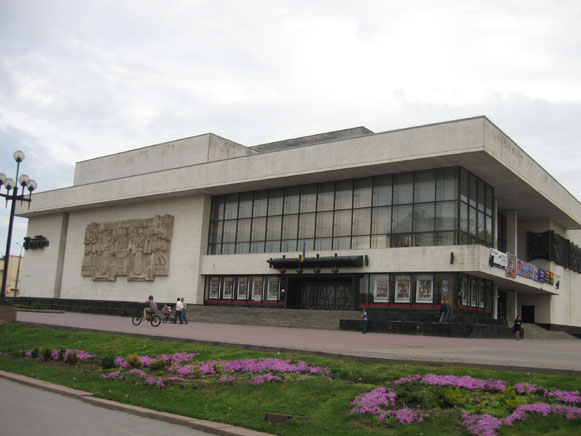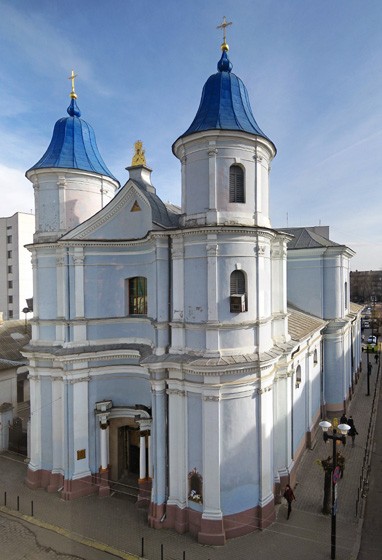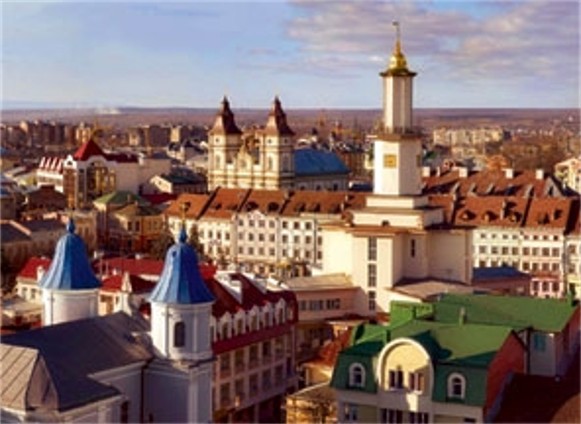Ivano-Frankivsk
Ivano-Frankivsk [Івано-Франківськ; Ivano-Frankivs’k]. Map: IV-5. City (2010 pop 240,458), raion center and capital of Ivano-Frankivsk oblast, an important railway and highway junction, and now the second-largest city in Galicia. Called Stanyslaviv until 1939 and Stanislav until 1962, it is situated in Subcarpathia near the confluence of the Bystrytsia Nadvirnianska River and Bystrytsia Solotvynska River. Stanyslaviv was founded in 1662 on the site of the former village of Zabolotiv by the Polish magnate A. Potocki, who named it after his son, Stanisław. In 1663 it was granted the rights of Magdeburg law. The town was well protected by walls and a citadel (restored in the mid-18th century) and was densely built up. Potocki's palace was completed there in 1672 and the town hall in 1695. After the Turks captured Kamianets-Podilskyi in 1672, Stanyslaviv protected the southeastern borders of the Polish-Lithuanian Commonwealth from the Turks and Tatars. In 1677 the Armenian community there received special privileges; thenceforth the town had two municipal councils—one for the Ukrainians and Poles and one for the Armenians. Shortly after its founding, Jews began settling there. As a result of Armenian commerce, the town was an important trade and manufacturing center from the late 17th to the mid-18th century. Fairs were held regularly where Moldavian, Hungarian, Silesian, and Austrian goods were traded for locally produced leather and fur products.
Stanyslaviv was also a flourishing cultural center. A branch of the Cracow Academy was established there in 1669; in 1722 it was converted into a Jesuit college. In 1732 the town's population was 3,321 (45 percent Ukrainian and Polish, 44 percent Jewish, and 10 percent Armenian). Later many Armenians out-migrated, and their self-government came to an end in 1769. In the 18th century, the town's development was hindered by frequent wars. During the Great Northern War Hetman Ivan Mazepa's forces occupied it in 1706–7, and during the Confederation of Bar it was thrice taken by Russian troops. Plagues decimated the populace in 1705, 1730, and 1770. In 1772 Stanyslaviv came under Austrian rule and became a circle and (from 1867) county center. In 1801 the state assumed ownership of the town from the Potockis, and its fortifications were torn down in 1809–12. During the Revolution of 1848–9 in the Habsburg monarchy, the Ukrainians there organized a circle council as a branch of the Supreme Ruthenian Council in Lviv and, in the circle itself, People's Militia units and a company of ‘Ruthenian Riflemen’ to fight the Hungarian and Polish insurgents. The construction of a railway junction in 1866 stimulated the city's growth. Its population increased from 11,000 in 1849 to 18,600 by 1880 despite a major fire in 1868. By 1886 it had about 30 small industrial enterprises. The appointment of a Greek Catholic bishop to Stanyslaviv eparchy (1885) and the establishment of a Ukrainian-language state gymnasium (1905, under the direction of Mykola Sabat) were milestones for the town's Ukrainians. Stanyslaviv's population continued to grow rapidly, reaching 33,400 by 1910. In 1925, after Knihynyn-Koloniia, which was originally a German settlement, and the Knihynyn-Selo had been incorporated, its population reached 54,000 (this included a 3,500-man garrison).
During the First World War Stanyslaviv was close to the front and in 1916–17 suffered much damage. From December 1918 to May 1919 it served as the capital of the Western Ukrainian National Republic (ZUNR). On 3 January 1919 the Ukrainian National Rada began holding its sessions there; on that day it passed the law on the unification of the ZUNR and the Ukrainian National Republic. From May 1919 to September 1939 the city was under Polish rule and was one of the larger industrial centers in Galicia. Its main industries were the locomotive industry and railway-car maintenance, petroleum refining, tanning, machine building, food processing, and woodworking. The city was a voivodeship capital (1921–39) and an important cultural center for its three principal nationalities. In 1939 its population of 64,000 included 12,000 Ukrainians (19 percent), 23,500 Poles (37 percent), 26,500 Jews (41 percent), and 2,000 Germans (3 percent). Stanyslaviv was an important Ukrainian religious, cultural, and educational center with a Ukrainian Greek Catholic seminary, a theological lyceum, three parishes, and three monasteries. Secondary education was provided by four Ukrainian (two state and two private) and seven Polish gymnasiums. A music school, established in 1902 by Denys Sichynsky and Ye. Yakubovych, became in 1921 a branch of the Lysenko Higher Institute of Music in Lviv. The city played an important role in Ukrainian musical life. A Boian choir society was organized there in 1895. The noted musicians D. Sichynsky,Osyp Zalesky, and Yaroslav Barnych worked there. Several dozen Ukrainian social and cultural organizations—such as the main office of the Skala Catholic reading halls, a branch of the Prosvita society (est 1877), artistic, religious, economic, professional, sports, and charitable associations—were active in Stanyslaviv. On the initiative of Nataliia Kobrynska the first Ukrainian women's society—the Society of Ruthenian Women—was founded there in 1884, and the first women's almanac—Pershyi vinok —was published there in 1887. A congress of Sich societies took place there in 1910, and a Ukrainian Women's Congress was held there in 1934. The amateur Tobilevych Ukrainian People's Theater was established in 1911; in 1928 it became a permanent Tobilevych Theater under the direction of Mykola Bentsal and the sponsorship of K. Vyshnevsky. In 1939 the Stanislav Franko Drama Theater was organized out of several Galician troupes, most notably the Stanyslaviv Ukrainian Touring Theater. Stanyslaviv was also an important publishing center: between 1879 and 1944, 43 periodicals were published there; most of them were short-lived. The most important were the economic biweekly Hospodar i promyshlennyk (1879–82), the monthly for precentors Diakovskii hlas (1895–1914, called from 1910 Holos diakiv), and Visnyk Stanyslavivs’koï ieparkhiï (1886–1939). No Ukrainian general or political newspaper, including Stanyslavivs’ki visty (1912–13), was published for more than two years, but a Polish weekly, Kurjer Stanisławowski, came out, with a few short interruptions, from 1886 to 1939. The Ukrainian press developed rapidly while Stanyslaviv was the capital of the ZUNR: 12 newspapers and magazines, including the government daily Republyka (1919), appeared there. During the 1920s Bystrytsia was a major publishing house and in book production the city stood fifth in Galicia; by 1939 about 150 books had been published there.
During the Second World War Stanyslaviv was under Soviet (1939–41) and German (1941–4) occupation. Soviet rule after July 1944 led to mass repression, particularly in 1945–6. Because of the liquidation of Jews under the Nazi regime (see Holocaust), the postwar resettlement of the Poles, and the influx of Russians, the national composition of the city's population changed; in the 1959 census Ukrainians accounted for 67 percent of the total population of 66,000, Russians for 25 percent, and others (mostly Jews and Poles) for 8 percent. After the war the city's industries were rebuilt and expanded. Today there are 45 enterprises, producing consumer items, instruments, tools and equipment (particularly for petroleum and gas extraction and refining), reinforced concrete, and glass products. The main educational institutions in Ivano-Frankivsk are the Subcarpathian National University, the Ivano-Frankivsk National Technical University of Petroleum and Gas, and the Ivano-Frankivsk National Medical University. Located in the city are the Ivano-Frankivsk Oblast Academic Music and Drama Theater and a puppet theater; an oblast philharmonic; oblast archives with documents dating back to the 18th century; the Ivano-Frankivsk Regional Studies Museum and several other museums; an oblast newspaper Prykarpats’ka pravda and several other newspapers; and the Halychyna oblast television station. Since the 1990s Ivano-Frankivsk has been a particularly important center of Ukrainian literature. The emergence in the city of a particularly large number of prominent Ukrainian writes, most often associated with the post-modernist literary discourse and including Yuri Andrukhovych, Taras Prokhasko, Volodymyr Yeshkiliev, and others, has been referred to as ‘Sanislavs’kyi fenomen’ (The Stanislav Phenomenon).
Among the city's architectural monuments are the city hall (now the Ivano-Frankivsk Regional Studies Museum, rebuilt in 1870), the former Jesuit college and Saint Mary's Church (1729) (now an art museum), a former Armenian baroque church with two steeples (1763), and remnants of the city walls. In the late 19th century the city center shifted southeast from the ‘old town.’ The eastern and northern districts of the city were densely built up. According to the general city plan of 1955, which was later modified, the old districts were to be reconstructed and new ones created. The city has many parks and a 38-ha artificial lake in the southwest.
BIBLIOGRAPHY
Barącz, S. Pamiątki miasta Stanisławowa (Lviv 1858)
Ploshchanskii, V. ‘Halytsko-russkii horod Stanyslavov podostovirnym ystochnykam,’ Naukovyi sbornyk Halytsko-russkoiMatytsy, 4 (Lviv 1868)
Szarłowski, A. Stanisławów i powiat Stanisławowski pod względem historycznym igeograficzno-statystycznym (Stanyslaviv 1887)
Holubkov, M.; Sichkar, H. Ivano-Frankivs’k (Lviv 1963)
Davydova, Iu. Ivano-Frankivshchyna v mynulomu i teper (Uzhhorod 1968)
Istoriia mist i sil: Ivano-Frankivs’ka oblast’ (Kyiv 1971)
Kravtsiv, B. (ed). Al’manakh Stanyslavivs’koï zemli (New York, Toronto, and Munich 1975)
Petro Isaiv, Volodymyr Kubijovyč
[This article was updated in 2010.]
.jpg)
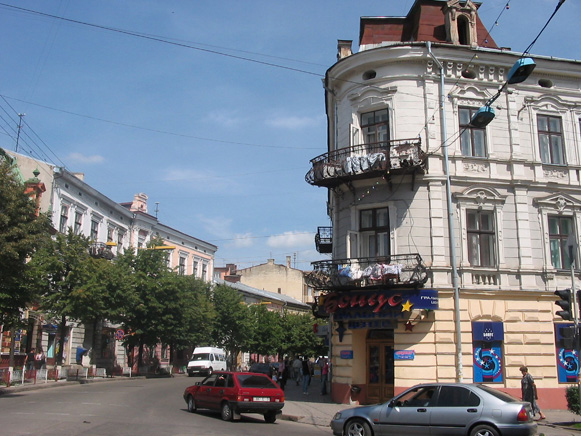
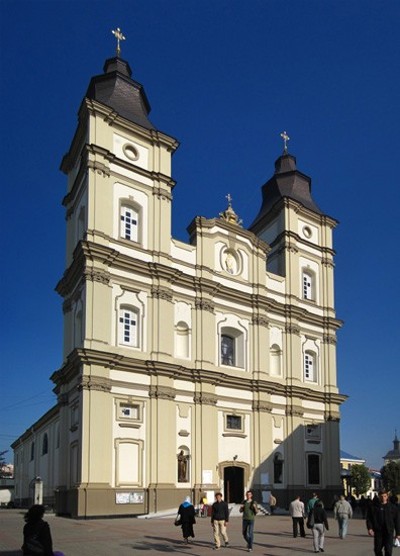
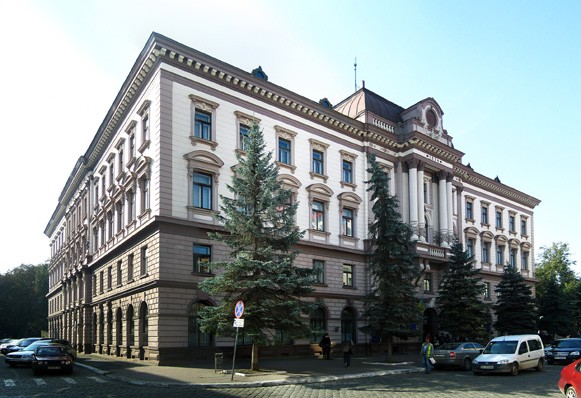
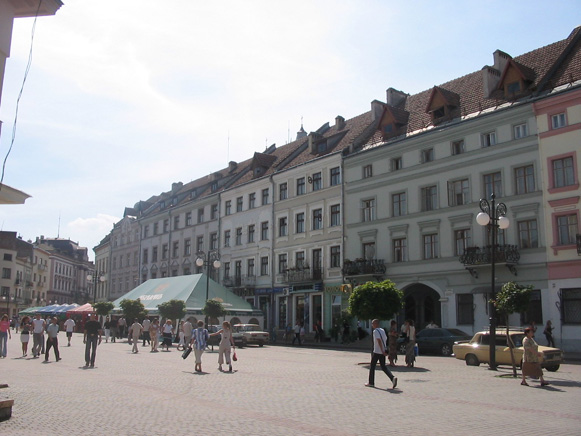
.jpg)
